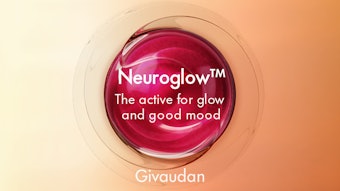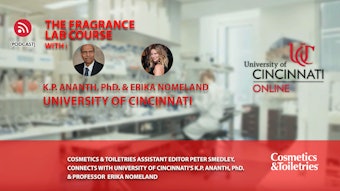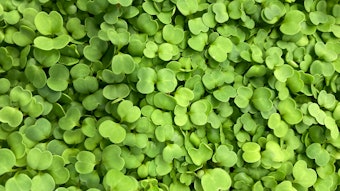Polymer use began in the 1800s with cellulose derivatives, the vulcanization of rubber, and styrene synthesis; but in reality, it started more than four million years ago with the formation of DNA and proteins. Polymers are a diverse class of chemistry. By definition, they are large molecules made up of chains or rings of linked monomer units—simple reactive building blocks. Smaller molecules or monomers are combined to form polymers that possess a characteristic chain structure of multiple repeating units that can be related or different.
While similar polymers can be grouped into classifications, they often still differ somewhat in structure, performance or their main component(s). As a result, not all same-named polymers are necessarily the same in performance or structural morphology. Typically the side groups on the backbone of a polymer influence its functional properties, even when present in small molar percentages. Understanding what side groups are attached and where will allow one to better understand the potential impact of the pendent side groups to the molecule’s functionality—and will thus assist the formulating chemist in choosing the proper ingredient for the desired results.
Polymers in the personal care industry are also categorized by a number of classifications in the International Nomenclature Cosmetic Ingredient (INCI) dictionary, including: organic polymers, inorganic polymers, siloxane polymers and naturally occurring polymers. These classifications generally are further divided into sub-classes: homo-polymers, copolymers, cross-linked polymers, mixed classification polymers, dendrimers, natural-sourced polymers and synthetic peptides. Polymer nomenclature assignment is based upon standard references such as the material’s CAS number, the International Union of Pure and Applied Chemistry (IUPAC), Merck, the Food Index, or generic INCI nomenclature—e.g., polyquaternium, polyacrylate, etc.
Due to the high efficacy of polymers, they typically are used in small quantities to exert various functions in formulations, including acting as: rheology modifiers, e.g., thickeners; surface active modifiers such as surfactants, emulsifiers and wetting agents; solubility modifiers including coupling agents and dispersants; bulking agents; preservatives; skin and hair conditioners; sunscreen agents; film-formers; aesthetic modifiers; coating agents/encapsulants; and abrasives/exfoliants. The subject matter is so complex and dynamically evolving that no one source can properly address the entire topic. The following is a tutorial meant to provide a starting point to help sort out the types of polymers along with their potential physical and chemical properties.
Naming Conventions
The IUPAC has devised a systematic set of rules for classifying polymers but the names can be cumbersome. Therefore, each industry shortens the names for simplicity’s sake and these shortened names eventually becoming common usage names. As noted, the architecture of a polymer typically affects physical, functional and/or chemical properties. The chains can be structured in multiple ways—including linear, branched, side chains, star polymers, comb polymers, brush polymers, dendronized polymers, ladders and cross-linked polymers—with a varying range of average molecular weights. Synthetic copolymers are seldom exactly defined sequences of many repeat units since there are an infinite number of ways to sequence two or more monomers along a polymer backbone (see Figure 1a–h).
Polymers also can be amorphous, lacking a positional order on a molecular scale and therefore softening over a temperature range known as the glass transition; e.g., polystyrene or poly- methyl methacrylate. Or, they can be semi-crystalline, having a true melting point at which the molecule becomes disordered. In addition, they can have both amorphous and semi-crystalline regions within the same polymer. A sampling of the various polymers and functions they serve in formulations is described later in this article.
Further, polymers can be characterized by the arrangement of the atoms in the chain, e.g. repeated olefin groups or polyolefin; through their physical attributes such as tensile strength or density, e.g. high density polyethylene; based on the dominant backbone, e.g. polyester, the reaction of a multifunctional hydroxyl- and/or carboxyl-functional group with other possible side reactions; or how they are produced—esterification, amidation, etc. Since there is a limited and uniform system of classifying polymers, the terminology has evolved based on historic terms or trade names, such as nylon, as well as the industry that is utilizing the polymer, in conjunction with the growing complexity of polymer science.
INCI Classifications2
For personal care, it is important first to understand the critical departure from the IUPAC and CAS naming: INCI assignments for polymers typically are based on starting monomers3 as opposed to the final resultant polymer. This is because not all polymers are easily defined; they are actually a complex mixture of reactants and by-products. Thus, basing a polymer’s name on the starting monomer is easier than trying to determine the final composition. In addition, a generic naming protocol is used if the assigned name includes four or more monomers; in this case, the name assignment would be based on its predominant chemical class; e.g., polyacrylate. Molecular weight, physical form and branching do not typically play roles in the nomenclature assignment. Finally, polymers can be differentiated as being either natural-derived (or sourced) or synthetically produced. INCI assignments normally fall within specific categories. Examples are as follows.
Homopolymers: Consisting of a chain extended by one type of monomer, e.g., polyisobutene or polystyrene.
Copolymers: Consisting of at least two monomers, with the slash symbol “/” used between each monomer, which are listed in alphabetical order; e.g., acrylates/aminoacrylates/C10-30 alkyl PEG-20 itaconate copolymer. Other examples include:
- Acrylamides copolymer, a copolymer of two or more monomers consisting of acrylamide or simple alkyl derivatives of acrylamide;
- Acrylates copolymer, a copolymer of two or more monomers consisting of acrylic acid, methacrylic acid or their simple esters;
- Simple vinyl polymers, designated by attaching the prefix poly to the monomer name, e.g., polyalkylenes; these are carbon chain polymers with double bonds along the monomer chain, e.g., polystyrene, polyethylene and polypropylene, polyolefin, etc. (designated as -C=C-); and
- Hetero-chain polymers, containing more than one atom type in their backbone. These polymers are grouped according to the types of atoms and chemical groups, e.g., carbonyl, amide or ester, located along the backbone. Another important class of hetero-chain polymers includes polysiloxanes, which have a -Si-O- backbone with methyl or other substituent groups attached to silicon.
Crosspolymers: Polymers consisting of one or more multifunctional monomeric constituents. These include monomeric cross-linkers labeled as crosspolymer, e.g. acrylates crosspolymer, with glycol methacrylate as the cross-linker, as identified in the definition. Also included in this category are polymeric cross-linkers where the cross-linker is identified in the INCI name assignment; e.g., acrylates/VA crosspolymer, adipic acid/diethylene glycol/glycerin crosspolymer.
Poly-generic: Polymers consisting of four or more monomeric molecules; e.g. polyamides, polyacrylic(ate), polyester, polyurethane, polyquaternium, polyimide, etc. Within this category are polyacrylate-X, a copolymeric acrylate that has a primary acrylic component represented as part of the copolymer composition, and polyquaternium-X, a copolymeric quaternary ammonium salt that has a primary quaternium component as part of the copolymer composition.
Alkoxylated homopolymeric ethers: Including ethylene oxide, propylene oxide and aziridine. For example, PEG-X is the polyethylene glycol fraction, where X denotes the average number of moles of ethylene oxide; PPG-Y is the polypropylene glycol fraction, where Y denotes the average number of moles of propylene oxide; and PEI-Z is the polyethylene imine fraction, where Z denotes the average number of moles of ethylene imine (aziridine).
Mixed alkoxylate polymer ethers: Including the PEG-X PEG-Y block copolymer architectural structuring; the random PEG/PPG-X/Y copolymer architectural structuring; and carboxylic acid or carboxylate PEG and PPG polymers or their derivatives, in which one of the terminal primary alcoholic groups (CH2OH) has been oxidized to the carboxy group (-COOH); e.g. PEG-10 oxidized to carboxylic acid or PEG-10 carboxylic acid.
Natural-derived: Biological polymers built from naturally occurring monomers frequently of the carbohydrate type, including all the sugars and starches, gums, cellulose and protein type biological polymers. For example:
- Monosaccharides, or simple sugars, represented by an aldose (aldehyde) derivative or ketose (ketone) derivative, e.g. glucose;
- Disaccharides, ethers of two monosaccharides, including maltose with two glucose units, sucrose with one glucose and one fructose unit, and lactose with one glucose and one galactose unit;
- Polysaccharides, consisting of repeat units of monosaccharides or their derivatives held together by glycosidic bonds and generally occurring in nature; e.g. glycogen. These are classified as homopolysaccharides and heteropolysaccharides.
Homopolysaccharides contain a single type of monosaccharide, with examples being starch (two types of glucose units) and cellulose (glucose units linked through a B(1-4) glycosidic linkage).
Heteropolysaccharides are composed of different types of monosaccharides or their derivatives and are found both in terrestrial and oceanic plants such as gums and natural polymers and the animal kingdom, including chitin and a large group of complex polysaccharides that are chemically bound to proteins; e.g. hyaluronic acid and biosaccharide-X;
- Peptides are named based on the number of repeating units of amino acid residues. In the material name, the amino acids are listed in alphabetical order. If the sequence is the same as a human peptide, however, there are special rules to communicate to the consumer that the material is the same or a replicate of a human gene sequence.
These include: a) When the peptide consists of two to ten amino acid residues and is named using the appropriate prefix di-, tri-, tetra-, etc., followed by the term peptide and an arbitrary number; e.g. dipeptide-2; b) When the peptide consists of 11 to 100 amino acids and is designated by the term oligopeptide followed by an arbitrary number, such as oligipeptide-X; and c) When the peptide consists of more than 100 amino acids and is designated by the term polypeptide followed by an arbitrary number; e.g. polypeptide-X.
- Human sourced ingredients are defined from the original source of components or genes. These include recombinant or replicated DNA fragments and are named by rh-, representing recombinant human sources or sh-, representing synthetic human sources. Examples are: rh-polypeptide-1, a single chain recombinant human peptide produced by fermentation; and sh-octapeptide-X, a recombinant human peptide produced synthetically to be identical to the naturally occurring protein.
Siloxane chemistry: This classification is broken down into many different sub-classifications but the common denominator is the silicon-oxygen- silicon structure, where there are one or two methyl groups on each silicon molecule that are terminated with a tri-functional group.
Sub-categories include: silanes, non-polymeric organo-substituted silicon compounds; cyclic polysiloxanes, representing species containing three to seven siloxane units, e.g. cyclopentasiloxane; linear polysiloxanes, named as derivatives of methicone or dimethicone and trimethylsiloxy end-blocked; e.g. dimethicone and amino bispropyl dimethicone; silsesquioxanes and silicates, e.g. acrylates/polytrimethylsiloxymethacrylate copolymer; and polysilicone followed by an arbitrary number, which is used to describe complex silicone polymers that cannot be named by common names or established conventions for silicone compounds; e.g. polysilicone-1 and polysilicone-11.
Dendrimers: These are generally built from a monomer unit that is joined together in a specific pattern: Where a single binding unit branches from two to three units, layering the structure in a three-dimensional ball. Examples include PEG-5 pentaerythrityl dimethylol propionate-2 dendrimer and PEG-5 pentaerythrityl dimethylol propionate-4 dendrimer.
Personal Care Applications
Since polymers are so complex, it is not easy to list all their proper uses in personal care products (see Figure 2). Following is a brief outline of potential uses for polymers in personal care formulations, along with some commercial formula examples. The formulas shown are taken from commercial product labels to illustrate the use of polymers in real applications. Note that the bolded items within the ingredient listings highlight the polymers used. Freedom from patent infringement is not to be inferred, and this information is offered solely for reader consideration.
Adhesives: include dextrin and hydroxypropyl cellulose;
Antifoam: such as simethicone and dimethicone silylate;
Binders: e.g. aluminum starch octenylsuccinate and polyethylene wax;
Emulsifiers, emulsion stabilizers: include acrylates/C10-30 alkyl acrylate crosspolymer, polyquaternium-3, PEG-4 oleate, polyglyceryl-6 distearate, steareth-2 and guar.
Commercial example: Avon Bali Bliss Body Lotion: Water (aqua), glycerin, Paraffinum liquidum, stearic acid, glyceryl stearate, PEG-100 stearate, dimethicone, fragrance (parfum), petrolatum, phenoxyethanol, cetyl alcohol, methylparaben, carbomer, potassium hydroxide, acrylates/C10-30 alkyl acrylate crosspolymer, disodium EDTA, tocopherol, citral, butylphenyl methylpropional, linalool, benzyl benzoate, hexyl cinnamal, limonene.
Film-formers: such as acrylates copolymer, biosaccharide gum-4, PVP/eicosene copolymer, sodium polystyrene sulfonate, siloxanes and copolymers;
Hair conditioning, fixatives: e.g. acrylates copolymer, AMP-acrylates copolymer, polyquaternium-10 and PVP/VA copolymer.
Commercial example: Piaoshun Everlasting Products Spa Control Style Spray Gel: Carbomer, triethanolamine, glyceride, PVP/VA copolymer, diazolidinyl urea, panthenol, fragrance (parfum), water (aqua).
Skin conditioning: include polyisoprene, bis-diglyceryl polyacryladipate-2, glycereth-31, dimethicone and PEG-45M.
Commercial example: Joe Fresh Style Crème Lipstick: Polybutene, caprylic/capric triglyceride, octyldodecanol, ceresin, synthetic wax, polyglyceryl-2 triisostearate, bis-diglyceryl polyacryladipate-2, Cera carnauba, Cera microcristallina, Simmondsia chinensis (jojoba) seed oil, hydrogenated vegetable glycerides, tocopherol, tocopheryl acetate, Aloe barbadensis leaf extract, bisabolol oil, methylparaben, propylparaben, phenoxyethanol.
Surfactants: examples are PEG-X, PEG-X/PPG-Y, PVP and natural-derived, such as potassium alginate and chitosan lauroyl glycinate;
Surface modifiers, viscosity modifiers/gellants/thickeners: such as PEG-15 glyceryl stearate, acrylates copolymer, acrylates/C10-30 alkyl acrylate crosspolymer, sodium polyacrylate and C8-22 alkyl acrylate/butyl dimethicone methacrylate copolymer).
Commercial example: Bioré Men’s Double Hydra Action Gel Facial Wash: Water (aqua), sorbitol, lauryl hydroxysultaine, lauric acid, laureth-6 carboxylic acid, potassium hydroxide, myristic acid, ethylhexylglycerin, acrylates/C10-30 alkyl acrylate crosspolymer, palmitic acid, phenoxyethanol, disodium EDTA, fragrance (parfum), PEG-65M, pullulan.
Controlled release: e.g. acrylates copolymer;
Exfoliants: including aluminum silicate, polyethylene powder or spheres and ethylene/acrylic copolymer;
SPF sunscreens and boosters: such as polyester-7, polyamide-2 and polysilicone-15.
Commercial example: Avon Sun+: Water (aqua), ethylhexyl methoxycinnamate, benzophenone-3, homosalate, ethylhexyl salicylate, methylene bis-benzotriazolyl tetramethylbutylphenol, butyl methoxydibenzoylmethane, butylene glycol, glycerin, PEG-8, polyester-7, neopentyl glycol diheptanoate, cetearyl alcohol, ceteth-20 phosphate, tromethamine, dimethicone, caprylyl glycol, decyl glucoside, carbomer, dicetyl phosphate, glyceryl stearate, phenoxyethanol, trimethylsiloxysilicate, cholesterol, acrylates/C10-30 alkyl acrylate crosspolymer, fragrance (parfum), hexylene glycol, xanthan gum, Aloe barbadensis extract, panthenol, Punica granatum fruit juice, tocopheryl acetate, Lupinus luteus extract, Triticum vulgare germ extract, Prunus amygdalus dulcis extract, Linum usitatissimum extract.
Carriers: Include cetereth-20 and PEG-8/SMDI copolymer.
Commercial example: Oriflame Nature Kiwi & Orange Boosting Shampoo: Water (aqua), sodium laureth sulfate, sodium chloride, cocamidopropyl betaine, fragrance (parfum), polyquaternium-7, benzophenone-4, sodium citrate, limonene, Actinidia chinensis fruit extract, propylene glycol, 2-bromo-2-nitropropane-1,3-diol, glycerin, PEG-8, Citrus aurantium dulcis extract, PEG-8/SMDI copolymer, palmitoyl myristyl serinate, sodium polyacrylate.
Foamer/foaming agents: e.g. vinylpyrrilidone/vinylimidazole copolymer; and
Dispersant, coupling agents: such as C20-40 pareth-10 and PEG-40 hydrogenated castor oil.
Commercial example: LaScad Narta Freshissime Antiperspirant Roll-on: Water (aqua), alcohol denat., aluminium chlorohydrate, fragrance (parfum), PPG-26-buteth-26, PEG-40 hydrogenated castor oil, linalool, geraniol, alpha-isomethyl ionone, limonene, hydroxyethylcellulose, citronellol, menthoxypropanediol, hexyl cinnamal, butylphenyl methylpropional.
Summary
Polymers have become more complex and this has taxed the clear identification of the resultant composition. However, these evolving technologies have allowed for more focused functional polymers that meet specific needs in hair care, skin care, underarm applications and cleansers. As the science becomes more sophisticated, so does the methodology in determining correlations between physical properties and benefits.
The present paper aims to improve the formulator’s understanding as to which polymer works best for a particular application and how to best utilize its unique properties and benefits. If the past is an indicator of the future, the industry can assume that polymers will become more complex as the science of processing them becomes more mainstream. This will continue to tax the capabilities of INCI to name them and for the formulator to properly sort out which may provide the best and most economical choice to support the targeted goal of the formula. Reproduction of the article without expressed consent is strictly prohibited.
References
Send e-mail to [email protected].
1. Chem 421: Introduction to polymer chemistry, University of Rochester chemistry department Web site, available at http://chem.chem.rochester.edu/~chem421/classify.htm (Accessed May 19, 2010)
2. International Cosmetic Ingredient Dictionary and Handbook, 13th ed, PCPC: Washington, DC USA (2010)
3. INCI Applications and Nomenclature Conventions, available at https://inci.personalcarecouncil.org/ (Accessed May 24, 2010)
4. E Abrutyn, The INCI process: A chairman’s perspective, Cosm & Toil 122(9) 22 (Sep 2007)










